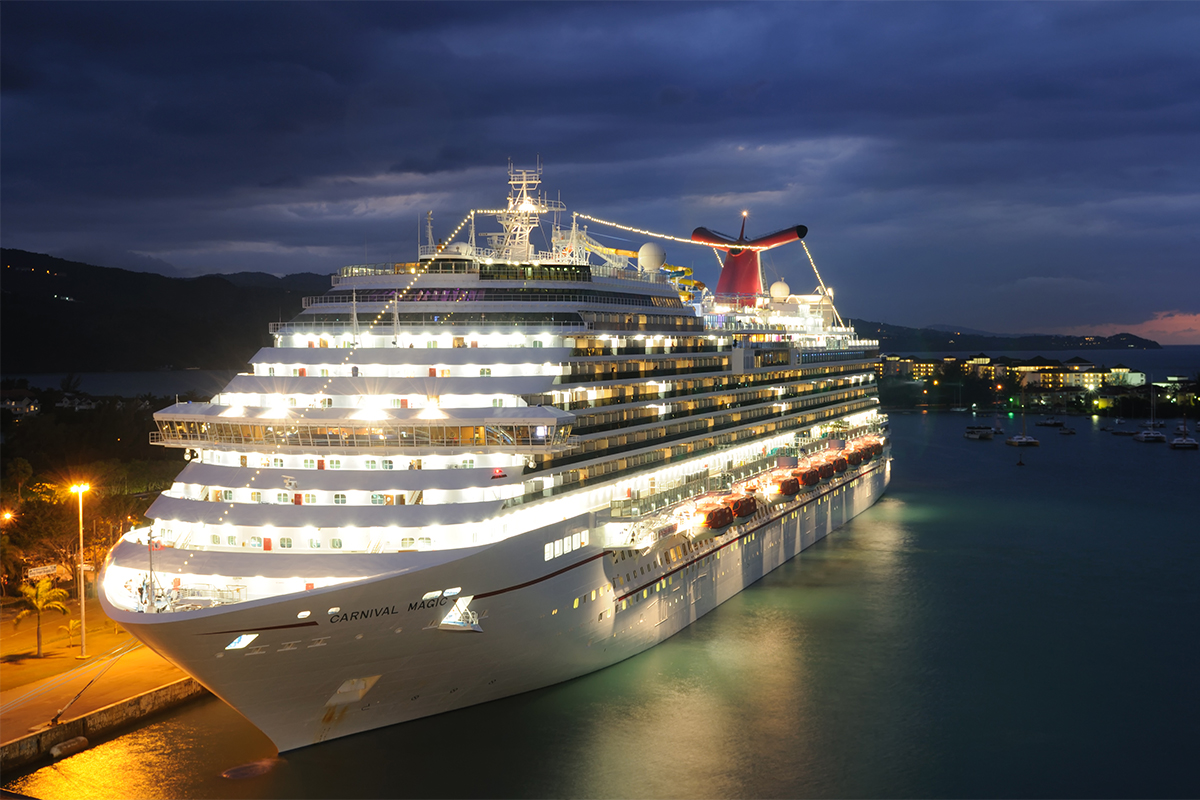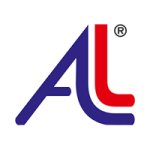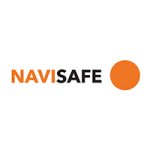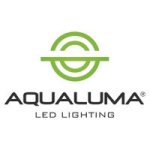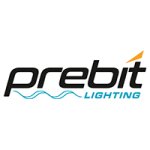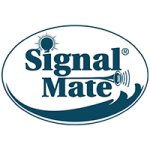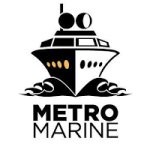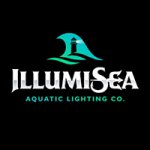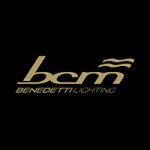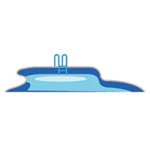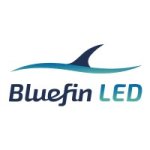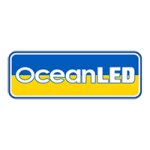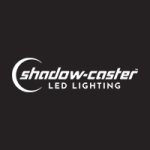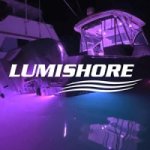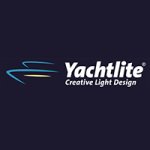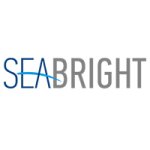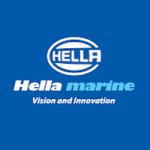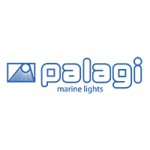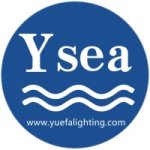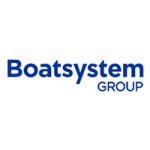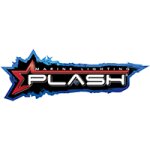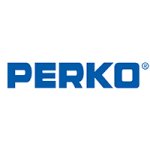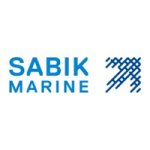Marine lighting
Marine lighting is a critical aspect of maritime operations. The design and construction of marine lighting systems are tailored to meet the specific challenges of maritime environments, including adherence to regulations, durability in marine conditions, task-specific functionality, aesthetic integration, and considerations for weather and visibility. This specialized approach ensures that lighting on boats and ships contributes to safe navigation, enhances functionality, and creates a comfortable and visually pleasing onboard environment. Maritime environments, such as those encountered on ships, boats, ocean liners, and other water vessels, have unique conditions that necessitate lighting solutions tailored to these settings. The open water, especially at night or during adverse weather conditions, can limit visibility. Proper lighting is crucial to help vessels see each other, navigational aids, and potential obstacles. Maritime environments are susceptible to various weather conditions, including fog, rain, snow, and storms. These conditions can reduce visibility even further, making it essential for maritime lighting to be designed to cut through such obstacles. The reflective nature of water can create glare, making it challenging for mariners to distinguish between lights. Designing lights to minimize glare is crucial to ensure that navigational aids and signals are effective without causing visual discomfort for the observers. Vessels are in constant motion on the water, and this dynamic environment requires lights that can withstand the motion and vibrations associated with marine travel. There are international and local regulations governing the types, colors, and placement of lights on vessels. Mariners must adhere to these regulations to ensure consistency and predictability in the display of lights, contributing to overall safety on the water. Marine lighting is designed to meet or exceed these requirements.
Navigation
Marine vessels require specific lighting arrangements to comply with navigation rules and regulations. Maritime authorities have established a set of navigation rules and regulations to ensure the safe and orderly movement of vessels on the water. These regulations include requirements for lighting configurations on different types and sizes of vessels. Compliance with these rules is crucial to maintaining a standardized system that facilitates communication and navigation between vessels.
Navigation lights on marine vessels are designed to serve as a communication tool, conveying essential information to other vessels in the vicinity. These lights are not only essential for the vessel's own safety but also contribute to the overall safety of maritime traffic. The design of navigation lights is specifically tailored to provide clear and unambiguous signals to other vessels. These signals convey important information, such as the vessel's size, direction of movement, and its status (e.g., whether it is underway, at anchor, or restricted in its ability to maneuver). The primary objective of having standardized navigation lights is to prevent collisions at sea. By clearly indicating a vessel's position, course, and status through its lights, mariners can make informed decisions to avoid potential conflicts and navigate safely. Navigation lights play a crucial role in safe navigation, particularly during periods of reduced visibility. This can include nighttime, fog, heavy rain, or any condition that hampers visibility. The distinct characteristics of navigation lights help mariners identify and assess the movement and status of other vessels, contributing to overall navigational safety. During times of reduced visibility, such as darkness or adverse weather conditions, reliance on visual cues becomes even more critical. Navigation lights become essential aids in providing information about the presence, location, and intentions of other vessels when visual contact is limited.
Safety
Safety is a paramount concern in maritime environments. Marine lighting systems are designed to enhance safety by providing adequate illumination for various tasks and areas on a vessel. The marine lighting systems are designed to ensure that critical areas on the vessel, such as walkways, staircases, and emergency exits, are well-lit. Proper illumination in these areas is crucial for preventing accidents, enabling safe movement, and facilitating quick and efficient responses in emergencies. In case of emergencies, such as fires or other critical situations, having well-designed
emergency lighting is crucial for a safe evacuation process. Illuminated escape routes, emergency exits, and life-saving equipment are essential for ensuring that individuals on board can respond promptly and evacuate the vessel in a controlled manner.
Emergency lighting systems are specifically mentioned as an essential component of marine lighting. These systems are designed to activate automatically in the event of power failures or other emergencies that result in a loss of normal lighting. The purpose of emergency lighting is to ensure continued visibility, allowing crew members and passengers to navigate safely and evacuate the vessel if necessary. Power failures can occur due to various reasons, including technical issues or external factors. Emergency lighting systems serve as a critical backup during such events, mitigating the risks associated with sudden darkness and ensuring that essential areas remain illuminated.
Functionality
Marine lighting must be functional in the context of the vessel's specific needs. This includes providing task lighting tailored for various activities on board, such as navigation, engine room inspections, and maintenance. Different areas of the vessel require specific lighting conditions to ensure that tasks can be performed safely and efficiently. Navigation is a critical activity on a marine vessel, especially during nighttime or low visibility conditions. The lighting system must be optimized to provide adequate illumination for navigation instruments, charts, and the surrounding environment to ensure accurate and safe navigation. The lighting on a vessel should be suitable for tasks that involve inspecting and maintaining equipment, machinery, and other critical components. Proper illumination is essential for identifying issues, conducting inspections, and performing necessary maintenance tasks, contributing to the overall operational reliability of the vessel. Marine lighting systems must be highly reliable, ensuring consistent and uninterrupted performance. The reliability of lighting is crucial for maintaining operational efficiency and safety on the vessel, as any failure in lighting could compromise the crew's ability to perform essential tasks. The marine environment presents unique challenges, including exposure to saltwater, vibrations, and fluctuations in temperature. Lighting systems must be specifically engineered to withstand these challenges to ensure long-term durability and functionality. For example, corrosion-resistant materials may be used to protect against the corrosive effects of saltwater. Marine vessels are subject to constant vibrations, especially in rough seas.
Lighting fixtures must be designed to withstand these vibrations to prevent premature failure and ensure continuous operation. The marine environment can experience significant temperature variations, from extreme cold to hot conditions. Lighting systems should be able to operate reliably across this temperature spectrum without performance degradation.
Aesthetics
While functionality and safety are paramount, aesthetics also play a role in marine lighting design. Aesthetics refer to the visual appeal or attractiveness of a design. In the context of marine lighting, it means that the appearance of lighting fixtures is considered a key element in the overall design of the vessel. This includes both the interior and exterior spaces of the boat or ship. Aesthetics are relevant to both the interior and exterior lighting of a vessel. Interior lighting design may include fixtures that complement the overall design theme, provide accent lighting for specific areas, and create a comfortable atmosphere. Exterior lighting, on the other hand, contributes to the vessel's external appearance, making it visually appealing both during the day and at night. Well-designed lighting schemes can significantly enhance the visual appeal of a marine vessel. Thoughtfully chosen fixtures, their placement, and the quality of light they emit can contribute to the overall ambiance, creating a more visually pleasing and comfortable environment for those on board. A well-designed lighting scheme should harmonize with the overall design and decor of the vessel. This includes considerations such as the choice of materials,
color temperature of the light, and the integration of lighting fixtures into the architectural and design elements of the boat or ship. The visual appeal of a vessel is an important aspect, not only for the satisfaction of those on board but also for external observers. Aesthetic lighting can contribute to the overall image of the vessel, making it more attractive and potentially appealing to owners, guests, and the general public.
Types of marine lights
The types of marine lights used on vessels are influenced by factors such as the vessel's type, intended use, and compliance with international maritime regulations. For example, a cargo ship may require specific navigation lights and floodlights for loading and unloading cargo, while a passenger cruise ship may prioritize interior lighting for passenger comfort and safety. The purpose for which a vessel is used influences the types of lighting it requires. For instance, a fishing boat may need specialized deck lighting for nighttime fishing operations, while a research vessel may require precise navigation lights for scientific expeditions in remote areas. The diversity in marine lighting solutions reflects the varied requirements of different vessels and the overarching goal of ensuring safety and efficiency at sea. Compliance with established standards and regulations is essential to maintaining safety standards and facilitating seamless maritime operations.
Navigation lights
Different types of navigation lights are used on vessels to convey information about their position and orientation to other vessels, particularly during periods of reduced visibility. These navigation lights are part of the International Regulations for Preventing Collisions at Sea (COLREGs), which establish a standardized system to enhance safety and prevent collisions by ensuring that vessels communicate their status and direction clearly. Following these regulations promotes a common understanding among mariners, contributing to safe and efficient maritime navigation, especially during times of limited visibility, such as at night or in adverse weather conditions.
- Masthead lights are white lights placed on the front of the vessel. They are visible from directly ahead and within a sector of 225 degrees on either side of the vessel's centerline. These lights indicate the presence and forward direction of the vessel to other mariners. They help vessels identify each other and determine their relative positions, especially when approaching head-on.
- Stern lights are white lights placed at the rear of the vessel. They are visible from directly astern and within a sector of 135 degrees on either side of the vessel's centerline. Stern lights signal the presence and rear direction of the vessel. Like masthead lights, they assist in determining the orientation of vessels in relation to each other and are crucial for safe navigation.
- Port and starboard side lights are colored lights, with red indicating the port side and green indicating the starboard side, are placed on the respective sides of the vessel. These lights are visible from specific angles on their respective sides. The red port light is visible from dead ahead to 112.5 degrees on the port side, and the green starboard light is visible from dead ahead to 112.5 degrees on the starboard side. Port and starboard side lights help other vessels determine the relative heading of the observed vessel. The color and placement of these lights convey whether the vessel is approaching from the port or starboard side, aiding in the avoidance of collisions.
Anchor lights
Anchor lights are specific types of navigation lights used on vessels to indicate that the vessel is at anchor, i.e., stationary and not underway. This information is crucial for nearby vessels to be aware that the anchored vessel is not in motion and may have limited ability to maneuver. Anchor lights are typically all-round white lights, meaning they emit light in all directions (360 degrees). This design ensures that the light is visible from any angle around the anchored vessel, providing maximum visibility to other mariners in the vicinity. Vessels are generally required to display anchor lights from sunset to sunrise and during periods of reduced visibility. This helps maintain a clear and standardized indication of a vessel's anchoring status during times when visual identification may be challenging. The anchor light is typically mounted at a sufficient height on the vessel to maximize its visibility. This could be at the top of the mast or in another location that ensures the light is unobstructed and visible from a distance.
Towing lights
Towing lights refer to specific configurations of lights displayed by vessels engaged in towing operations. These lights are essential for indicating the towing status and configuration of the vessel to other mariners, helping to prevent collisions and ensure safe navigation. In a scenario where a power-driven vessel is towing another object or vessel behind it, the vessel displays a standard sternlight, which is a
white light visible from directly astern. This light is a navigation light indicating the rear of the vessel. Positioned above the sternlight, the yellow towing light is specific to vessels engaged in towing operations. Its color and placement indicate to other mariners that the vessel is towing astern.
Interior lights
Marine interior lights are designed to meet the specific lighting needs of different areas within a vessel. There are various types of marine interior lights designed to cater to different lighting needs and preferences within the confined spaces of boats and ships.
- Ceiling-mounted lights are fixtures mounted on the ceiling or overhead surfaces to provide general ambient lighting. They offer overall illumination for various activities within the boat's interior.
- Pendant lights are hanging light fixtures suspended from the ceiling. They add decorative and functional lighting and are often used in dining or seating areas.
- Adjustable reading lights are often mounted near seating or berths with adjustable arms or heads to provide focused illumination for reading or close tasks. They allow users to direct light precisely where needed for reading or other detailed activities.
- Bathroom vanity lights are installed above or beside mirrors in the head (bathroom) area to provide adequate lighting for grooming and personal tasks. They offer focused illumination for tasks such as shaving, applying makeup, or personal grooming.
- Bulkhead lights are wall-mounted fixtures designed to provide general lighting or accent lighting on vertical surfaces. They illuminate specific areas of the interior, adds to the overall lighting scheme.
- Under-cabinet lights are installed beneath cabinets or shelves to illuminate countertops or specific work areas. These light fixtures add task lighting in galley areas, improving visibility for food preparation.
- LED strip lights are flexible strips with integrated LEDs that can be mounted in various locations to create indirect lighting effects. LED strip lights add accent lighting, enhances aesthetics, and provides customizable illumination.
- Courtesy lights are low-level, subtle lights often installed along pathways or steps to improve visibility without causing glare. They are used to enhance safety by providing minimal illumination in areas with low ambient light.
- Night lights are low-intensity lights used for navigation or providing subtle illumination during nighttime hours. They help maintain low visibility for night vision and safety.
- Task lights are small, focused lights designed for specific tasks, such as cooking or working. They provide targeted illumination in areas where detailed activities take place.
- Interior lighting may include provisions for emergency lighting systems which are equipped with battery backup or emergency power sources. In the event of power failure or other emergencies, emergency lights ensure continued visibility and safety on board.
Deck lights on a marine vessel are low-intensity lights designed to provide illumination on the deck. The primary purpose of marine
deck lights is to enhance visibility on the deck during nighttime. They serve as a safety feature, helping crew members move around the deck more safely by preventing tripping hazards and aiding in the identification of obstacles or equipment. Additionally, these lights contribute to the overall visibility of the vessel for navigation and operational purposes. Step lights are designed to be installed on stairs and walkways on the vessel. They serve a specific safety function by providing illumination on stairs and walkways. They are strategically placed to prevent accidents such as tripping or falling that could occur when navigating these areas in low-light conditions. Step lights improve the visibility of each step, making it easier for crew members to ascend or descend safely, especially during nighttime or in areas with reduced visibility.
Marine flood lights are designed to provide intense and widespread illumination over large areas on and around a vessel. Marine flood lights are commonly used during loading and unloading operations, especially during nighttime or in low-light conditions. They facilitate the safe movement of cargo on and off the vessel by providing sufficient visibility to the crew and equipment involved in these tasks. In emergency situations or search and rescue operations, flood lights are crucial for providing visibility over large areas of the water. They assist in locating individuals or objects in distress, contributing to swift and effective response efforts. Flood lights play a role in enhancing the security of the vessel. The well-lit surroundings deter unauthorized access and improve surveillance capabilities, reducing the risk of security incidents. Adequate lighting is essential for preventing accidents and ensuring the safety of crew members on the vessel. Flood lights illuminate potential hazards, obstacles, or uneven surfaces, reducing the risk of slips, trips, and falls during nighttime or challenging weather conditions.
Searchlights and spotlights
Searchlights and spotlights are characterized by their high-intensity light output, providing a powerful beam that can cover significant distances. This intensity is crucial for tasks that require long-range visibility. Searchlights are equipped with a pan-and-tilt mechanism that allows them to be directed in various directions. This feature provides flexibility in adjusting the light beam to focus on specific areas of interest. Searchlights and spotlights are often used for navigation purposes, especially in situations where standard navigation lights may not provide sufficient visibility. They can be directed to scan the water and surroundings for obstacles, aiding in safe vessel maneuvering. Searchlights are utilized for signaling to other vessels or shore facilities. The ability to control the direction of the light beam allows for the creation of distinct signals, contributing to communication between vessels or between a vessel and onshore personnel. Searchlights play a critical role in search and rescue operations. Their powerful beams can be directed over large areas of water to locate and illuminate individuals or objects in distress, improving the chances of successful rescue efforts. Searchlights and spotlights are particularly valuable in low visibility conditions, such as fog, darkness, or adverse weather. Their powerful beams cut through these challenging conditions, providing clear visibility and aiding navigation and operational tasks.
Underwater lights
Underwater lights are mounted below the waterline of a vessel, often on the hull or other underwater surfaces. These lights serve both functional and aesthetic purposes, contributing to the overall appearance of the vessel and providing illumination in the water. Underwater lights provide illumination in the water, making it easier to see the water surface and surrounding areas. This can be useful for various purposes, such as monitoring the presence of marine life, observing the sea floor, or ensuring safety when entering or leaving a berth. The illumination from underwater lights can assist in docking or anchoring, providing improved visibility of underwater structures, rocks, or other potential hazards. Underwater lights come in various colors and configurations, allowing vessel owners to customize the appearance of their boat. The ability to choose different colors or even create dynamic lighting patterns adds a decorative element to the vessel.
LED technology has become the predominant choice for lighting applications in maritime environments. LEDs are highly energy-efficient, converting a significant portion of electrical energy into visible light. This efficiency is crucial for marine vessels, where power conservation is essential for extended use, especially in remote or off-grid areas. LED lights have a longer operational life compared to traditional lighting technologies. This longevity is advantageous in marine environments, where frequent replacement of bulbs can be challenging and time-consuming. LED lights are inherently robust and resistant to shocks, vibrations, and environmental stresses. This makes them well-suited for the harsh conditions experienced in marine settings, including exposure to saltwater, strong winds, and mechanical vibrations. LEDs are compact and lightweight, allowing for versatile and unobtrusive installation in various locations on a vessel. This flexibility in design is valuable for meeting specific lighting requirements in different areas of the boat or ship. LEDs provide instant illumination without the need for warm-up time. This is particularly important in maritime applications, where quick and reliable lighting is crucial for navigation, safety, and emergency situations. The focused direction of LED light ensures that it reaches the intended target area, improving visibility on the water. This is crucial for navigation, search and rescue operations, and general illumination on boats and ships. LEDs are known for their high lumen output relative to their power consumption. In marine environments, where visibility is often challenging due to factors like darkness or adverse weather conditions, high lumen output is essential for effective illumination. LED technology allows the manipulation of the spectral power distribution (SPD) for a wide range of color options, and the light output can be easily controlled. This flexibility is beneficial for creating specific lighting effects, meeting regulatory requirements for navigation lights, or enhancing the aesthetic appeal of marine lighting.
Smart technology
The integration of advanced controls and automation technology has transformed marine lighting into
smart lighting systems.
Smart lighting systems allow users to program customized lighting scenarios based on specific conditions or preferences. For example, users can create different lighting profiles for daytime, nighttime, or specific activities. Users can control the lighting system remotely, either from onboard control panels or via mobile devices. This allows for convenient adjustment of lighting settings from anywhere on the vessel. Some
smart lighting systems are equipped with
motion sensors that detect movement and automatically adjust the lighting accordingly. This feature enhances energy efficiency by ensuring that lights are only activated when needed. Smart lighting systems can be integrated with onboard navigation systems. This integration enables automatic adjustment of lighting levels based on factors such as vessel speed, heading, and environmental conditions. Smart lighting systems offer increased convenience by providing users with greater control and flexibility over their lighting environment. Users can easily adjust lighting levels, colors, and settings to suit their preferences and needs. The automation capabilities of smart lighting systems contribute to improved energy efficiency. Features such as motion sensors and programmable settings help minimize energy waste by ensuring that lights are only used when necessary and optimizing their performance. Smart lighting systems enhance safety on board by providing better visibility and control over lighting conditions. Users can adjust lighting levels to optimize visibility in different areas of the vessel, reducing the risk of accidents and improving situational awareness.
Design and construction
The design and functionality of marine lights are meticulously crafted to address the challenges and requirements unique to maritime environments. Marine lighting has indeed undergone a significant transformation in recent years, driven by advancements in technology, materials, and design. With the adoption of LED technology, marine lighting fixtures have become more robust and resilient, capable of withstanding the harsh conditions of the marine environment. Advances in materials science and engineering have led to the development of corrosion-resistant materials, sealed designs to prevent water ingress, and enhanced shock and vibration resistance. Marine environments expose lighting fixtures to corrosive saltwater, which can degrade materials and compromise performance over time. Therefore, marine lights are constructed using materials that are resistant to corrosion, such as marine-grade stainless steel or corrosion-resistant polymers. These improvements ensure that marine lighting fixtures remain operational and reliable even in challenging maritime conditions. Modern marine lighting fixtures feature sleek and stylish designs that contribute to the aesthetics of boats and yachts. LED technology allows for greater design flexibility, enabling the creation of custom lighting solutions tailored to the unique interior and exterior spaces of vessels. Lighting fixtures now come in a variety of shapes, sizes, and finishes, offering vessel owners more options for creating visually appealing lighting schemes. Marine lighting has become more customizable and personalized, allowing vessel owners to create unique lighting environments that suit their preferences and lifestyles. Vessel owners can tailor lighting designs to enhance relaxation, entertainment, or productivity, depending on the intended use of each area.
Regulatory compliance
Maritime authorities establish regulations dictating the requirements for lighting fixtures on vessels, including navigation lights, to ensure standardized signaling practices and enhance safety during maritime operations. Compliance with these regulations is essential for maintaining safe navigation at sea. Maritime authorities, such as coast guards or maritime regulatory bodies, establish rules and standards governing various aspects of maritime operations, including safety measures like lighting requirements. These regulations mandate particular specifications for navigation lights, which are essential for signaling and maintaining safety at sea. Additionally, they extend to other lighting fixtures present on vessels, such as interior and exterior lights, emergency lights, deck lights, and any other lights that contribute to safety or operational requirements. Vessel operators are required to adhere to these regulations by installing lighting fixtures that meet the specified standards. Compliance ensures that vessels are adequately equipped to signal their presence, navigate safely, and carry out operations effectively while at sea. The overarching goal of these regulations is to enhance safety at sea by standardizing lighting practices across vessels. By ensuring that all vessels meet the same lighting requirements, maritime authorities reduce the risk of accidents, collisions, and other hazards that could arise from inadequate lighting.
